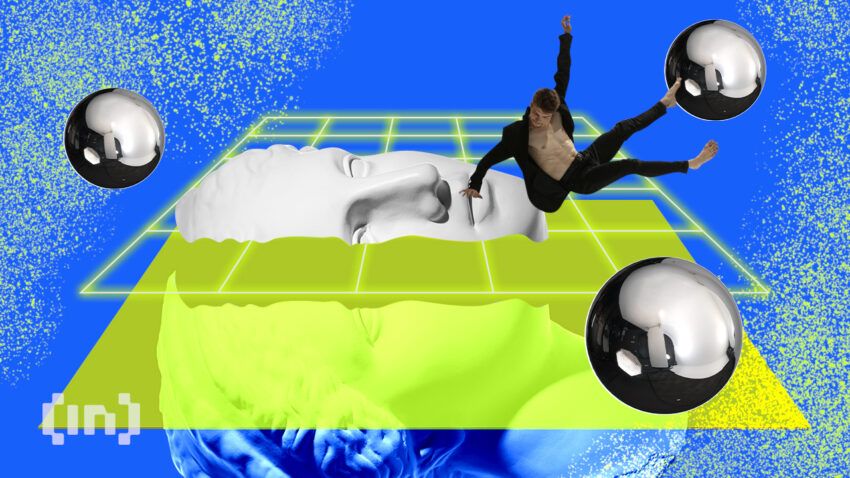Blockchain technology has come a long way since the launch of Bitcoin over a decade ago. However, its inherent scalability issues still pose a challenge for mainstream adoption. As the number of users and transactions on blockchain networks grows, the need for a scalable Layer 2 solution becomes increasingly urgent.
As blockchain technology continues to gain traction across industries, the need for a scalable solution grows ever more apparent. While traditional blockchain networks offer significant benefits, such as decentralization and security, their scalability limits have made it challenging for blockchain to be adopted as a mainstream payment method.
As a result, the industry has been exploring new approaches to increase transaction throughput and lower fees, and Layer 2 (L2) innovations have emerged as a promising avenue for achieving these goals.
The Scalability Challenge
One of the challenges that blockchain technology faces is scalability. Traditional blockchain networks, such as Bitcoin and Ethereum, operate on a single-layer architecture that can process only a limited number of transactions per second. This limit results in slower transaction times and higher fees during peak usage periods. Hence it is difficult for blockchain to be adopted as a mainstream payment method, particularly in retail transactions.
Exploring L2
L2 technologies offer a new approach to blockchain scalability that can increase transaction speeds while reducing fees. By building on top of existing blockchains, L2 enables faster, more efficient transactions while maintaining the security and decentralization of the underlying blockchain. L2 solutions aim to alleviate congestion and increase throughput on the blockchain by moving some of the transaction processing off-chain.
Bitcoin’s Lightning Network
Bitcoin’s Lightning Network is one of the most innovative L2 technologies. The Lightning Network operates as a decentralized network of payment channels that allow users to make fast and low-cost transactions off-chain. By creating a network of payment channels, the Lightning Network can process thousands of transactions per second, making it a viable solution for high-volume payment processing. The Lightning Network’s off-chain processing enables faster and more cost-effective transactions, making it a promising solution for the scalability challenge.
Ethereum’s Optimistic Rollups
Another prominent L2 fix is Ethereum’s Optimistic Rollups. Optimistic Rollups provide faster and more cost-effective transactions by processing transactions off-chain, then verifying them on-chain. This approach enables the Ethereum network to process up to 2,000 transactions per second. A significant improvement over the current maximum of 20 transactions per second. This technology offers scalability to the Ethereum blockchain. Making it a more practical option for applications that require high transaction throughput.
L2 Impact
L2 has the potential to revolutionize the blockchain industry and unlock new use cases and applications. By enabling faster and more efficient transactions, L2 solutions can open blockchain to a wider range of applications. Including retail transactions, micropayments, and gaming. The adoption of such solutions can also significantly reduce transaction costs, making it a more affordable solution for users.
Polygon
Polygon, formerly known as Matic Network, is am L2 scaling solution designed for the Ethereum network. Unlike other L2 solutions, Polygon employs Plasma chains and a Proof-of-Stake (PoS) consensus mechanism to facilitate fast, secure, and low-cost transactions. Due to its ability to slash transaction fees and boost transaction throughput on the Ethereum network, Polygon has gained popularity in recent years.
Developers can build decentralized applications (dApps) with ease on its flexible and scalable infrastructure. Additionally, its compatibility with Ethereum and other blockchain networks make it an appealing option for cross-chain communication and interoperability.
Interoperability Challenges
One of the most significant challenges facing L2 is interoperability between different L2 chains and the underlying blockchain. L2 can offer significant benefits. Yet, they also introduce additional complexity and require new infrastructure and protocols to ensure interoperability. This challenge requires collaboration between various blockchain networks and L2 solution providers to develop standardized protocols to ensure interoperability.
Security Challenges
There is also the challenge of maintaining the security and decentralization of the base blockchain. And L2 gateways can introduce new security risks. Thus it is essential to develop robust security protocols to ensure the integrity of the network. Security measures, such as encryption and multi-factor authentication, need to be implemented to ensure security.
Future Development
Despite these challenges, the potential upside of Layer 2 makes it a promising avenue for future blockchain development. As the blockchain industry continues to evolve, L2 will undoubtedly play a crucial role in shaping the future of this exciting technology. The integration of L2 protocols with traditional blockchain networks has the potential to unlock new use cases and applications and accelerate mainstream adoption.
L2 Solutions for Blockchain Scalability and Beyond
L2 solutions offer great potential for unlocking new blockchain use cases and applications, although they present challenges as well. Nevertheless, as the blockchain industry evolves, L2 solutions will play a crucial role in shaping the future of this technology.
With continued innovation, L2 solutions may enable the mainstream adoption of blockchain technology and revolutionize the way we think about transactions and value exchange. The potential of L2 to extend beyond blockchain scalability to include enhanced privacy, reduced transaction costs, and increased throughput, makes it a promising solution for myriad industries.
Disclaimer
Following the Trust Project guidelines, this feature article presents opinions and perspectives from industry experts or individuals. BeInCrypto is dedicated to transparent reporting, but the views expressed in this article do not necessarily reflect those of BeInCrypto or its staff. Readers should verify information independently and consult with a professional before making decisions based on this content. Please note that our Terms and Conditions, Privacy Policy, and Disclaimers have been updated.


